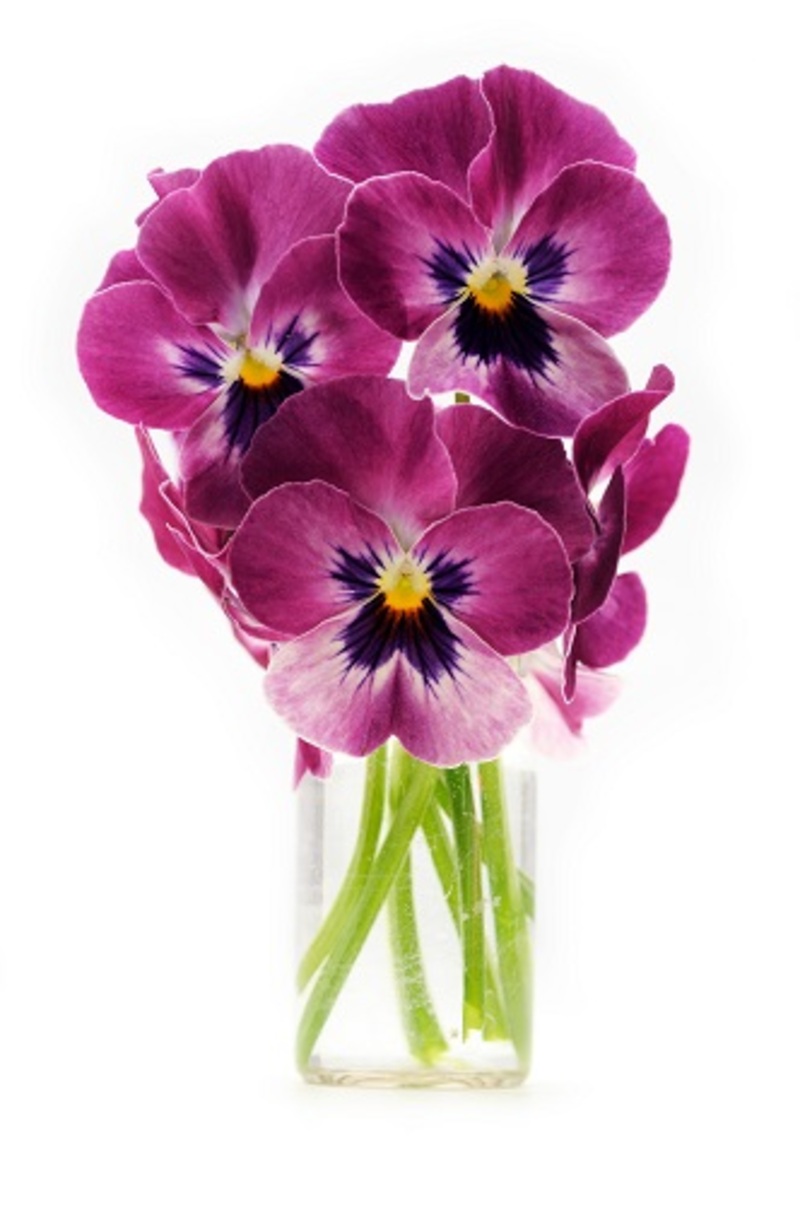Unveiling the Mystique of Orchid Plant Care
Posted on 22/08/2025
Unveiling the Mystique of Orchid Plant Care
Orchids have captivated gardeners and nature lovers for centuries with their exquisite beauty and enigmatic allure. With over 25,000 species and countless hybrids, these stunning plants evoke a sense of sophistication and grace in any environment. But for many, successful orchid plant care remains a mystery, shrouded in a reputation for being challenging to maintain.
In this comprehensive guide, we'll lift the veil and explore the fascinating world of orchids. Whether you're a novice or an aspiring orchidist, discover actionable tips, expert advice, and the crucial secrets behind consistent orchid care success. Let's demystify the care of orchid plants and help your blooms thrive!
Why Orchids Captivate Gardeners Worldwide
What is it about orchids that has enthralled generations of plant enthusiasts? Their appeal goes far beyond their mesmerizing blooms:
- Exotic Beauty: Each orchid variety presents unique flower shapes, colors, and delicate details.
- Longevity: With proper orchid plant care, their flowers can last for weeks or even months.
- Diversity: Orchids can be terrestrial (soil-growing), epiphytic (growing on other plants), or even lithophytic (rock-growing), adapting to various environments.
- Symbolism: Orchids symbolize love, luxury, fertility, and strength across different cultures.
Despite their reputation for being temperamental, understanding their native habitats and specific needs is the first step in demystifying orchid care at home.

Understanding Orchid Species and Their Differences
Learning to care for orchids starts with knowing which type of orchid you have. The most common varieties found in households include:
- Phalaenopsis (Moth Orchid): Renowned for their easy-going nature and long-lasting blooms, perfect for beginners.
- Cattleya: With large, fragrant flowers, requiring more light than other varieties.
- Dendrobium: Known for their striking floral spikes and moderate care requirements.
- Oncidium (Dancing Lady): Noted for their profuse flowering and lively, cascading inflorescences.
- Vanda: Lush, showy, and needing bright light--ideal for experienced growers.
By identifying your orchid's species, you unlock the door to its proper care and ensure healthier growth.
How Orchids Differ from Other Houseplants
Unlike typical houseplants, orchids are primarily epiphytes--they naturally grow anchored to trees, absorbing moisture and nutrients from the air and rain. This drastically changes their care requirements:
- No typical soil: Orchid roots prefer airy, bark-based mixes or sphagnum moss--not heavy potting soil.
- Unique hydration needs: Natural rainfall patterns, not regular watering schedules, guide their humidity and moisture needs.
- Airflow and humidity: Proper movement of air prevents root rot and fungal infections.
Adapting your orchid plant care routine to mimic these natural conditions is the key to sustained success.
Optimal Orchid Care: Key Elements for Success
Mastering the art of orchid plant care involves attention to a handful of critical factors:
1. Light Requirements for Orchids
- Phalaenopsis & Dendrobium: Prefer bright, indirect light. An east-facing window with filtered sunlight is ideal.
- Cattleya & Vanda: Require more light, thriving close to south or west windows (use sheer curtains to avoid burning leaves).
- Tip: Yellow leaves may indicate too much light, while dark green leaves suggest insufficient light.
2. Watering Your Orchids Wisely
- Rule of Thumb: Allow the potting mix to dry out slightly between waterings. Overwatering is the leading cause of orchid failure.
- Check the roots: Plump, white roots with green tips indicate proper hydration. If roots turn brown and mushy, you may be overwatering.
- Frequency: Typically once a week, but frequency varies based on season, pot size, and humidity. Use tepid, distilled, or rainwater, and avoid wetting the leaves.
3. Humidity and Air Circulation
- Humidity Levels: Orchids flourish at 40-70% humidity. Use a humidity tray or room humidifier if you live in a dry climate.
- Air Movement: A gentle fan or natural airflow helps prevent pests and disease.
4. Best Potting Medium for Orchids
- Bark Mix: Ideal for Phalaenopsis and many epiphytic types.
- Sphagnum Moss: Retains more moisture, preferred by some species but can present risks of rot if overwatered.
- Leca or Charcoal: Useful for advanced growers desiring increased drainage.
5. Fertilizing Orchids for Vigorous Growth
- "Weakly, weekly": Apply a balanced orchid fertilizer (20-20-20 or similar) at half or quarter strength with every other watering during active growth.
- Flush the roots: Periodically rinse with plain water to prevent fertilizer salt buildup.
6. Repotting Orchids: Timing and Technique
- When? Every 1-2 years, ideally after the plant finishes blooming.
- Why? Old media decomposes, restricting airflow and harboring pests.
- How? Gently tease away old media and dead roots. Re-pot in fresh orchid mix, providing adequate drainage.
Solved Mysteries: Common Orchid Care Problems and Solutions
Identifying Orchid Stress and Recovery Tips
- Wrinkled leaves: Often signal underwatering or root rot. Inspect the roots and adjust watering.
- Pale or yellowing leaves: Typically too much sunlight. Move your orchid to filtered light.
- No blooms: Could indicate insufficient light or not enough temperature variation between day and night. Try moving to a slightly brighter spot or providing cooler nighttime temps.
- Sticky leaves or black spots: Usually a sign of pests or fungal/bacterial infections. Remove affected parts and treat with an orchid-safe fungicide or insecticidal soap.
Root Rot and Orchid Survival
Root rot remains the most persistent threat to orchids. Warning signs include mushy roots, foul smells, and wilting despite moist media. Rescue your orchid by:
- Removing the plant from its pot and discarding old media.
- Trimming away all rotten roots with sterilized scissors.
- Re-potting in fresh, well-draining orchid mix.
- Reducing watering while new roots grow.
Year-Round Orchid Plant Care Calendar
Understanding the annual cycle of your orchid plant helps anticipate its needs throughout the seasons:
- Spring: Many orchids enter a growth phase. Increase watering, resume fertilizing, and repot if necessary.
- Summer: Orchids need more frequent watering and humidity. Watch for pests and provide good airflow.
- Fall: Some species prepare to bloom; reduce feeding and watering slightly. Ensure temperature drops at night to trigger flowering.
- Winter: Most orchids rest. Lower watering, stop fertilizing, and keep them away from chilly drafts or overheating radiators.
Expert Orchid Growing Strategies
Tips for Orchid Re-blooming
- Light: Blooming orchids need bright, indirect sunlight.
- Temperature: Nighttime drops of 10-15?F (5-8?C) help stimulate flower spikes.
- Post-bloom care: Cut spent flower spikes back to the node or base, depending on the species, to encourage future blooms.
Displaying Orchids for Maximum Impact
- Grouping: Cluster various species for a lush, tropical look.
- Elevated Placement: Display orchids at eye level on stands or windowsills to best appreciate their blooms.
- Creative Containers: Glass vases, hanging baskets, and mounted displays can highlight their distinctive roots and growth habits.
Myths and Truths About Orchid Plant Care
Orchids are often surrounded by myths that hinder successful cultivation. Let's set the record straight:
- Myth: Orchids are only for expert gardeners.
Truth: Phalaenopsis and some Dendrobiums are easy to care for, making them suitable even for beginners. - Myth: You must water orchids with ice cubes.
Truth: Consistent, tepid water is safer--ice can shock roots and isn't found in their native habitats. - Myth: Orchids are delicate and die easily.
Truth: When their basic care needs are met, orchids are resilient and can live for decades.

Frequently Asked Questions About Caring for Orchid Plants
Can I grow orchids in low light?
Some orchids, like Phalaenopsis, tolerate moderate to low light but generally thrive in bright, indirect light. If you don't have enough natural light, try an LED grow lamp.
Why are my orchid's leaves turning yellow?
Possible causes include too much sun, overwatering, or natural leaf aging. Address these factors for healthier foliage.
What's the best temperature range for orchids?
Most orchids prefer 65-75?F (18-24?C) during the day and 55-65?F (13-18?C) at night. Avoid sudden temperature swings.
How do I get my orchid to bloom again?
Ensure adequate light, a nighttime temperature drop, and continue proper care even when it's not in bloom. Patience is key--some orchids bloom only once a year, while others bloom multiple times.
Conclusion: Embrace the Joy of Orchid Plant Care
With their unmatched beauty and enduring mystique, orchids deserve their place as the jewels of both home and professional gardens. By uncovering their secrets and adopting mindful, attentive orchid care routines, you not only enrich your living spaces but also experience the profound satisfaction of nurturing these remarkable plants to bloom again and again.
Remember: Successful orchid plant care is not about perfection, but about understanding, adaptation, and patience. Whether you're starting with your first Phalaenopsis or expanding your collection to rare species, let this guide inspire you to enjoy the incredible journey of orchid growing. With every new leaf and vibrant flower, the mystique of the orchid becomes part of your everyday life.







